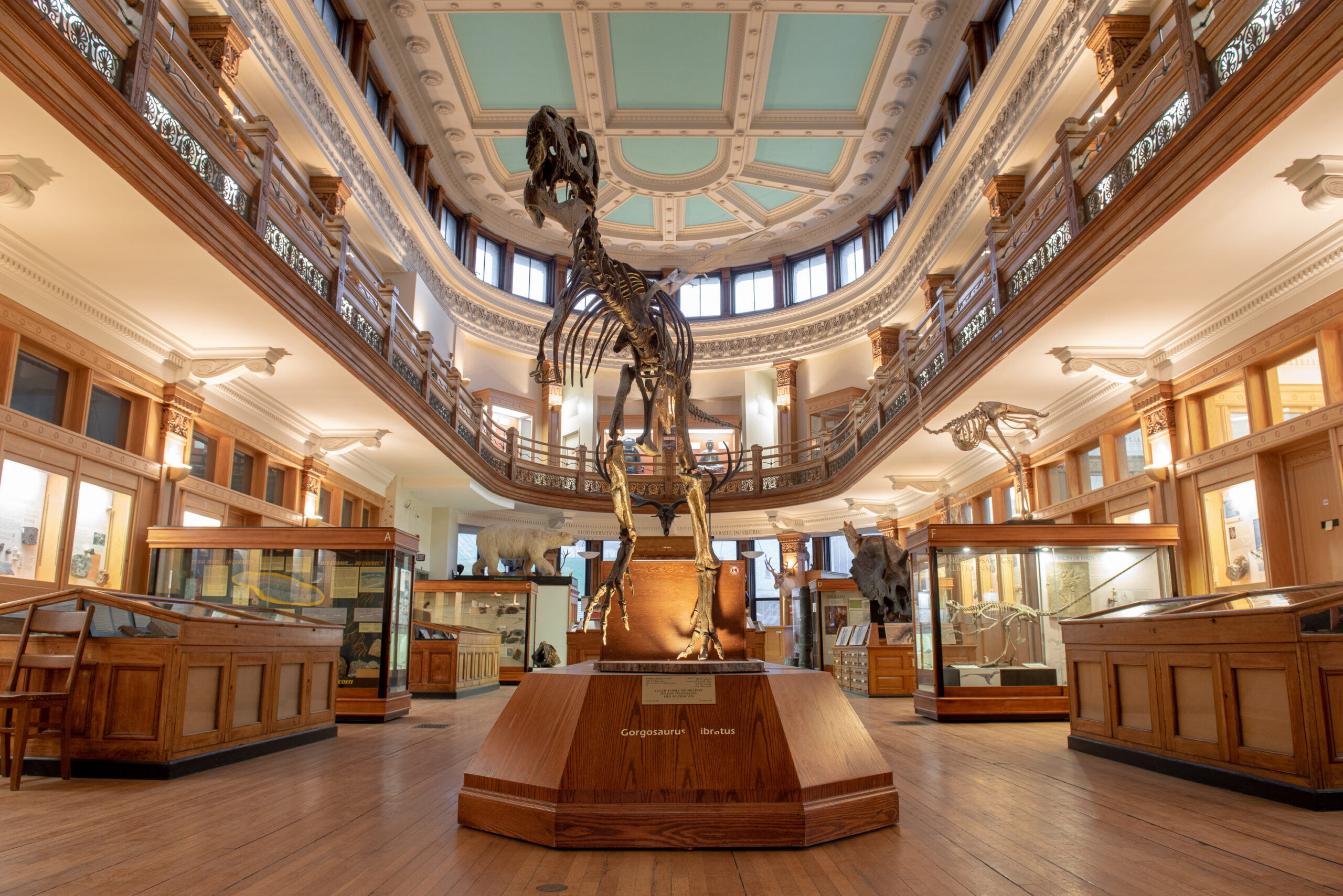
If you’ve been meaning to visit McGill’s Redpath Museum, now is the time.
The historical building will undergo major renovations to bring it up to modern standards thanks to Ministry of Education grants, operating and accessibility funds, and the support of generous donors. The public can visit until the end of this year but will find doors closed at the start of 2024 when the work to pack and safely store the collections will begin. The construction part of the renovations will begin once that is completed, likely in the summer.
Built in 1882 by the Victorian naturalist Sir William Dawson, the Redpath is home to a vast collection of scientific and cultural artifacts – everything from rare minerals to fossils to ancient tools, coins, and instruments. As part of the Faculty of Science, the Museum has long supported collections-based research and teaching. Generations of McGill undergrads have attended lectures in the Redpath auditorium or learned about evolution in its hands-on teaching labs.
The museum is also a popular destination for families and school groups. While the Redpath will not be able to accommodate visits during the renovations, the Museum’s educators are preparing a series of resources and activities for teachers and families to ensure the Museum continues to serve the wider Montreal community throughout the closure.
“The Redpath Museum plays an important role as a place of learning and scholarship, not just for our McGill students and faculty but for the greater Montreal community as well,” said Bruce Lennox, Dean of Science. “We’re incredibly excited that the Museum will soon be more accessible for everyone to enjoy.”
Some items will still be accessible for researchers
Beginning in January, items on display and in storage will be packed up and relocated to protect them from damage and construction dust. Museum staff will work with researchers and students who request access to items during the renovations. Access to the collections will be limited, and requests will be dealt with on a case-by-case basis. Staff will need to focus on completing work already underway and prepare for the big move.
“Packing and protecting museum collections is a far more complex process than a regular moving job. There are different and specific considerations from one item to the other, from temperature, to humidity, to tolerance for being moved,” said Annie Lussier, Curator, World Cultures Collections.
Members of the Museum staff are working in coordination with the Faculty of Science and Facilities Management to finalize details, including which pieces will be needed for teaching and research purposes and where they will be stored. Anyone who foresees a need to access the collections during the renovations should get in touch with the Museum staff.
Greater accessibility for all
Creating an accessible space is the reason for all the planning, spending, and work. Currently, the Museum collections are only accessible to the public by way of staircases. Even display areas and washrooms lack space and features for those with mobility needs.
“Bringing a heritage space up to today’s standards is a significant challenge. However, we take accessibility needs very seriously. With this project, we think we’ve struck the right balance between respecting the past and serving the future,” said Denis Mondou, Associate Vice-Principal, Facilities Management and Ancillary Services.
When the work is done, the building will have a second entrance and an elevator to all floors. Two new, gender- and mobility-inclusive washrooms will be added, one at the new entrance level and one on the second floor.
Working on a cooler Museum
The University is also exploring other potential upgrades, taking advantage of the closure period to modernize the building. One such project, still requiring funding and approvals, focuses on the installation of a new heating, ventilation, and air conditioning (HVAC) system. Currently, the Museum lacks a modern system, something that has a significant impact on visitors, staff, and students.
“During the summer months, it gets so hot in the Museum that we have to close our doors at 2:30 p.m. to ensure everyone’s wellbeing and safety,” said Ginette Dessureault, Redpath Museum administrative assistant.
“Furthermore, excessive heat isn’t good for the collections,” added Anthony Howell, Curator, Zoology Collections. “We’re glad that the facilities team is working on the funding for that as well.”
If financing is secured in time, project managers will be able to take advantage of the storage and closure period for the HVAC installation – a huge undertaking because it affects the entire building.
While resource, closure and renovation details are finalized, community members are encouraged to consult the Museum FAQ, which is currently in development and will soon appear on the Redpath website. It will be updated whenever more information is available.

Good luck with the project! I use to love to visit the museum in the 60’s when I was a child. We lived in the neighbourhood and it was always a great experience and there was no entrance fee.